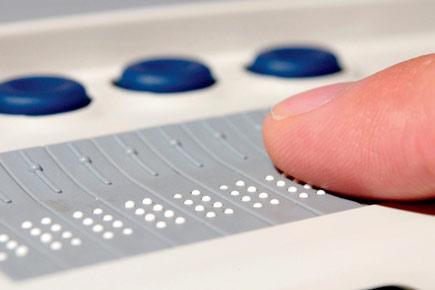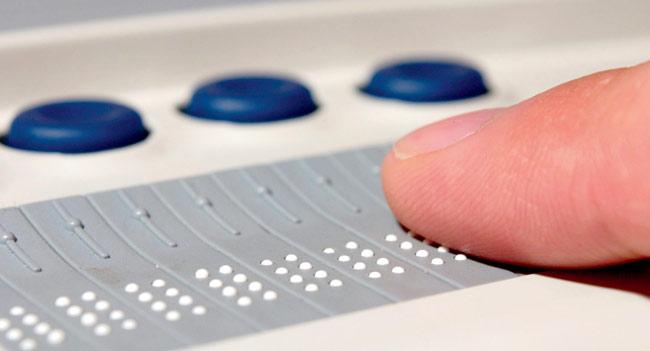The iCanConnect initiative in USA provides deaf-blind individuals earning less than $44,680 annually with the most up-to-date telecommunications devices, which they cannot afford

WASHINGTON, DC: Tanisha Verdejo loves to surf the internet for shopping deals. She chats on Facebook, learns about new recipes and enjoys sending emails to friends and family. Verdejo, who can’t see or hear, could do none of that a year ago. The 40-year-old New Yorker lives in a group home in Port Washington and is among the thousands of people with combined hearing and vision loss to have benefited from a pilot programme called iCanConnect. The initiative provides low-income deaf-blind individuals with the most up-to-date telecommunications devices for free and special training to use them.
ADVERTISEMENT

Prohibitive costs: In the US, high-technology devices like braille readers are very expensive
“For me, it’s opened up my whole world,” Verdejo said through a sign language interpreter at the Helen Keller National Centre in suburban Long Island. The centre, along with the Boston-based Perkins School for the Blind, is working with state agencies and others around the country to distribute items like refreshable braille displays, amplified telephones and computer programmes that allow for large print displays for those who may be vision-impaired but not entirely blind.
Much of the equipment is compatible with Apple devices such as the iPhone and iPad and connect via Bluetooth.
“Modern technology has rapidly progressed, and we are available to provide individuals with combined vision and hearing loss the best technology and telecommunications tools for their individual needs,” said Thomas J Edwards, president of Helen Keller Services for the blind.
For Verdejo and others, the changes have been dramatic. “I’m able now to access anything I want,” Verdejo said. “I mean, I have all these apps here and can see anything now. I see it through my braille device. I’m just so thrilled and happy that I’m able to communicate with the world.”
In the US, the high-technology devices are very expensive to produce. Refreshable braille displays can cost as much as $6,000. Software that enlarges text on computer screens can sometimes cost $800 to $1,000. “There’s not a lot of profit for these companies; the equipment is very expensive and most can’t afford it,” said Dr Christian Vogler, director of the Technology Access Program at Gallaudet University.
2,000
No of people who have been served by the programme
1,00,000
Deaf-blind population in the United States of America
 Subscribe today by clicking the link and stay updated with the latest news!" Click here!
Subscribe today by clicking the link and stay updated with the latest news!" Click here!







